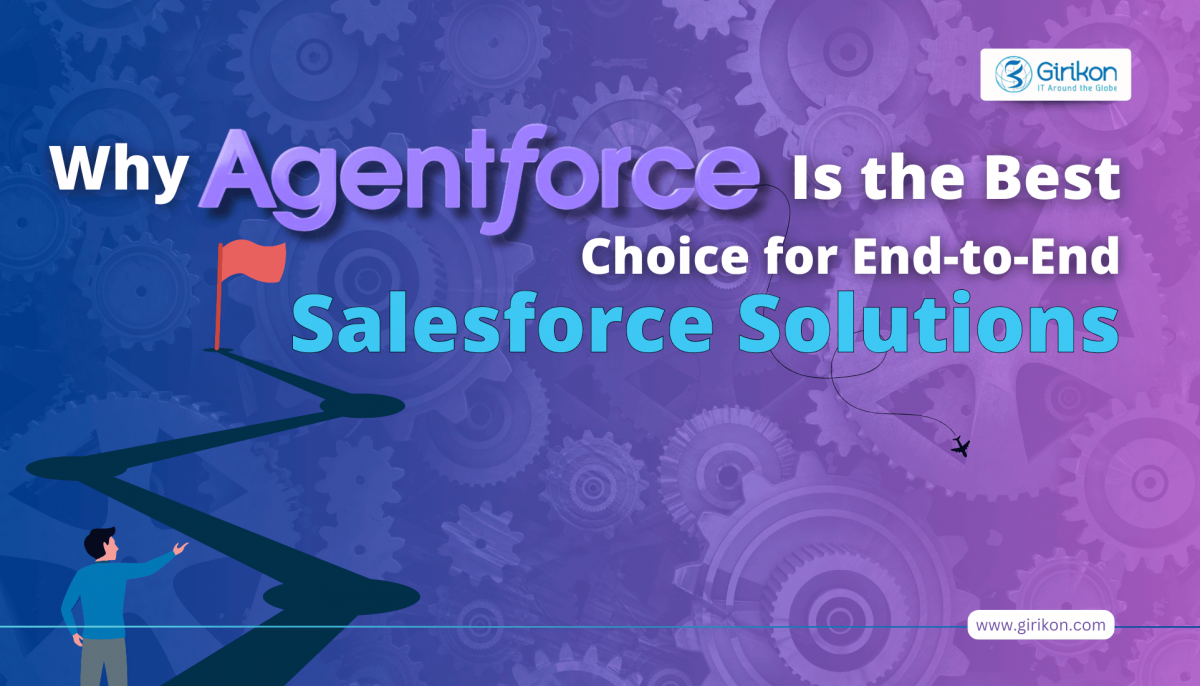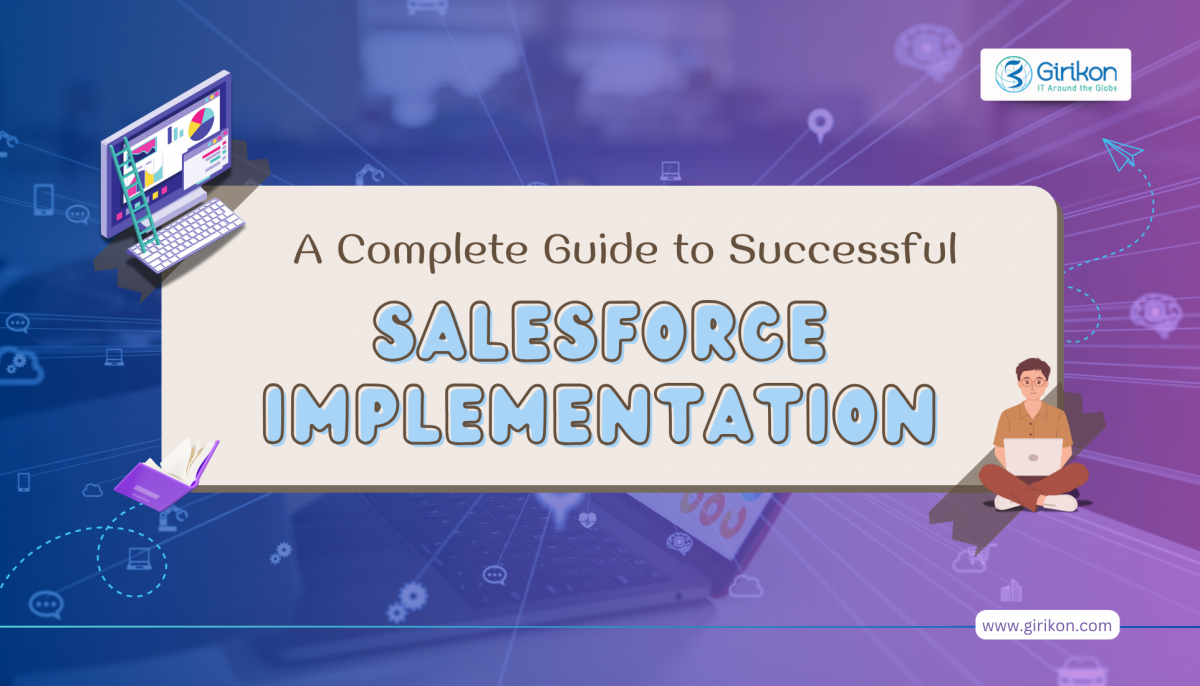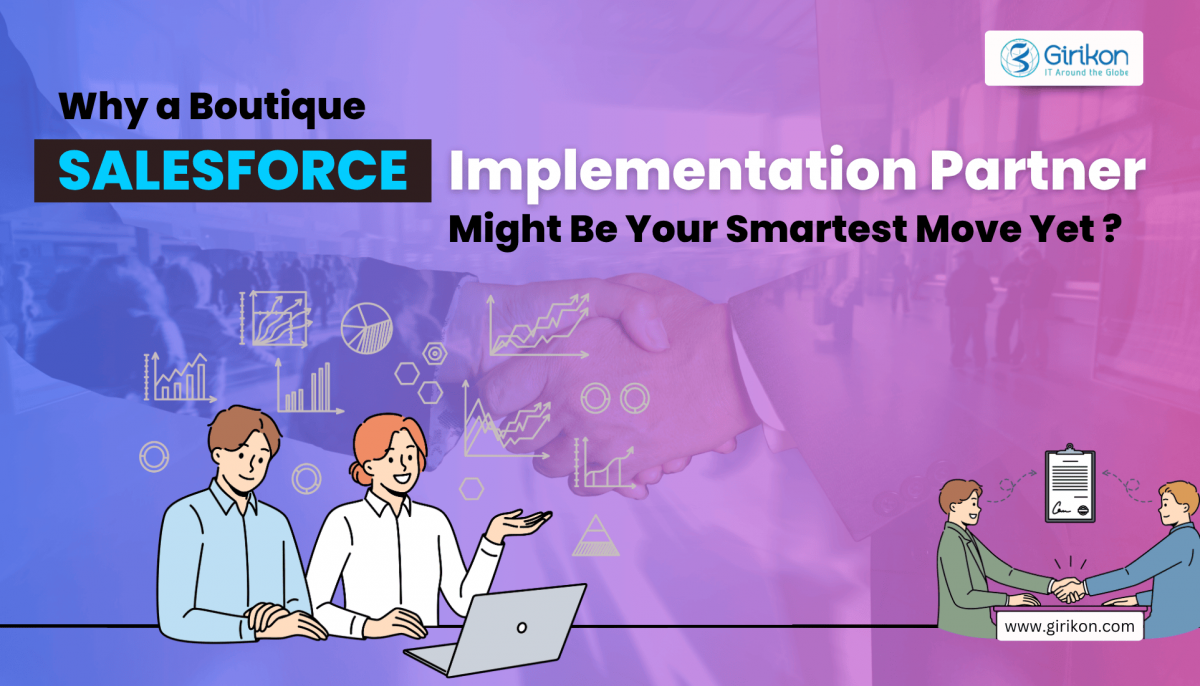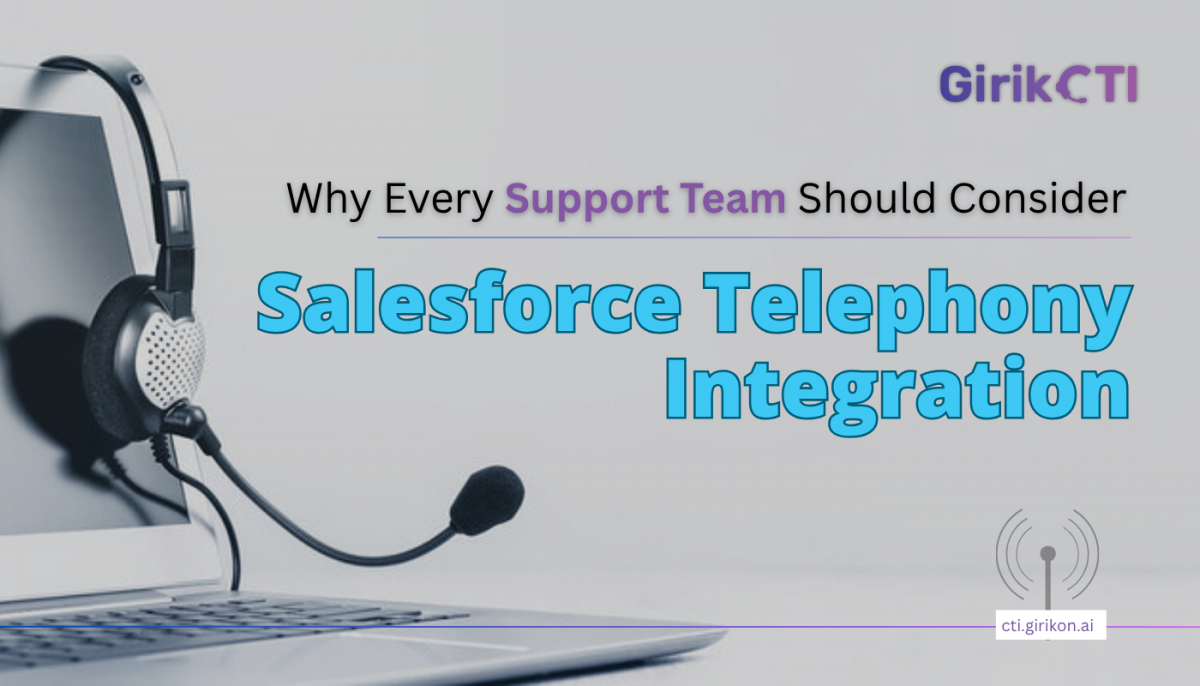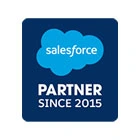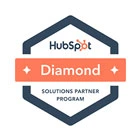The digital transformation of organizations across all industries has become a critical goal in today's rapidly changing corporate environment. Digital transformation is incorporating technology into processes and workflows in order to boost productivity, reduce costs, and accelerate growth. Salesforce is a popular and successful tool for innovation and its successful adoption is critical to any company's digital transformation. Businesses can adopt and integrate the Salesforce platform as part of their digital transformation plan by working with a dedicated Salesforce implementation partner.
What exactly does a Salesforce Consultant do?
Salesforce consultants work with a business to examine, structure, and integrate Salesforce into its daily operations. They assess the organization's present infrastructure, customize the platform to meet specific needs, integrate Salesforce with other systems and apps, and train employees on how to use the platform to its best potential. Salesforce consulting partners leverage Salesforce to help customers succeed with their digital transformation efforts.
Let us look at some of the key capabilities of a Salesforce consultant
Analyze Business Processes
Organizations must analyze their business processes to better understand their existing operations and identify opportunities for improvement. Businesses can analyze their current business processes, identify anomalies, and pave the way for Salesforce consulting partners to accelerate or optimize their operations. Harnessing Salesforce's capacity to reduce costs while also providing insights into customer contact and performance indicators can help organizations transform their operations. Salesforce's extensive reporting features allow companies to keep a closer check on their data analytics and make more informed business decisions.
Identify Areas of Improvement and Automate
Salesforce consulting services analyze current company processes to discover opportunities for optimization and process automation in order to achieve long-term development and preserve a competitive advantage. Businesses can utilize Salesforce to reduce operational complexity and upgrade outdated procedures and systems with the help of consulting partners. For example, companies can replace obsolete spreadsheet-based billing with an optimized Salesforce Billing component.
Salesforce consulting partners draw upon their experience and expertise to drive process automation to eliminate inefficient operations, increase productivity, and improve organizational throughput.
Discover Opportunities for Salesforce Integration
Salesforce consulting companies can assess the present digital infrastructure, including the integration of Salesforce with other systems and apps, to provide businesses with helpful insights. Salesforce partners may also assist customers in getting the most out of the Salesforce platform by discovering the best integration opportunities based on their specific requirements.
Integrating Salesforce with other systems and apps allows businesses to automate processes and workflows, reduce human data entry, and move data more efficiently. This can save time and money while also improving the accuracy of business operations.
Companies that combine Salesforce with a marketing automation platform, for example, can automate lead generation and lead nurturing, track lead behavior, and adapt messaging to each lead's interests and level of engagement. This can help companies close more deals and grow.
Provide Tailored Customer Experiences
Personalized customer experiences are required to build trust with customers and drive organizational success. For example, consulting firms use the Salesforce 360 platform to help businesses establish a comprehensive 360-degree view of their customers. This enables them to personalize email communication, promotions, and engagements based on the customer's previous interactions with the brand. This could lead to increased consumer happiness, brand loyalty, and future expansion opportunities.
Identify Opportunities For New Revenue Streams
The Salesforce Revenue cloud platform enables consultants to quickly identify new revenue sources. Furthermore, Salesforce Revenue Cloud automates the quote-to-cash process and optimizes revenue lifecycle management, allowing businesses to shorten sales cycles and increase sales efficiency.
Salesforce partners install and configure Salesforce Revenue Cloud and other Salesforce solutions to update the current Salesforce engine and provide an end-to-end view of business performance.
Companies can broaden their customer base, expand their reach, and achieve long-term growth by creating additional revenue streams.
Increase Salesforce Adoption and Drive Salesforce ROI
Increased platform adoption is an essential metric for measuring the efficiency of Salesforce investment. Salesforce partners help organizations do this by providing specific training programs, ongoing support, and access to a team of subject matter experts who can help with any challenges. Salesforce consulting firms understand that increased Salesforce usage can lead to a higher ROI.
Accelerator and QuickStart Packages
Businesses may quickly implement Salesforce solutions with the help of accelerators and quickstart kits. Quickstart for Salesforce can help businesses adopt Salesforce more quickly with a Minimum Viable Product (MVP).
Salesforce Accelerators offer several benefits, including shorter time to market, cheaper costs, and increased efficacy. Businesses can leverage Accelerators and QuickStart packages to save time and money.
Hiring a Salesforce consultant provides numerous benefits that provide quick results. First, their knowledge aids in maximizing the use of the Salesforce platform, ensuring that all functionalities are tailored to unique organizational needs. Second, they provide a plethora of best practices and industry insights to help create superior customer engagement strategies and boost corporate process efficiencies. Furthermore, they evaluate organizational data and provide actionable insights, allowing firms to make quick decisions, ultimately resulting in
Increased efficiency and organizational productivity.
Higher customer satisfaction and retention rates.
A scalable and adjustable platform that adapts to changing needs as customers grow.
Increased sales through improved lead generation and conversion.
Streamlined processes that improve collaboration within the company.
Solutions Tailored to unique business needs.
Every business faces distinct challenges and has its unique goals. Salesforce Consulting Services specializes in recognizing specific needs and providing customized CRM solutions. The solutions can address specific concerns while also scaling up as needed as the organization grows. Salesforce experts understand how to design and build solutions that fit perfectly into the way a business runs, so they can automate repetitive tasks, integrate with other apps, and create workflows that apply to many sectors.
Enhanced Operational Efficiency
Salesforce consultants are critical to ensuring that Salesforce CRM deployment improves overall operational efficiency. They optimize a variety of processes, ranging from sales to customer service, to ensure that they run more smoothly and efficiently. This includes eliminating redundancies and automating activities whenever possible, allowing employees to devote more time to key activities. A well-configured Salesforce system may significantly cut sales cycle time and enhance response times in customer support scenarios, resulting in a more dynamic and responsive business environment.
Strategies for Successful Salesforce Implementation
To achieve success, acquiring a new customer relationship management system, such as Salesforce, requires rigorous strategy and execution. Salesforce Consulting is crucial during this phase, assisting firms in setting clear goals and tailoring the CRM to match those objectives.
Planning and goal-setting
Every successful CRM installation begins with proper planning and goal setting. Companies should collaborate with Salesforce partners to identify their CRM objectives, such as higher sales, improved customer service, or better data management. This not only drives CRM customization but also measures implementation success.
User training and adoption
To be effective, a CRM system must be fully embraced by end users. Salesforce consulting firms play an important part in the process, giving intensive training and assistance to ensure that all employees are adept at using the system. This includes tailor-made training sessions based on roles and departments to address unique needs and concerns, resulting in increased adoption rates and simpler transitions.
Integration with existing systems
Salesforce is not meant to operate as an island among other IT systems. Instead, it should integrate with existing systems to improve operational efficiency and data processing capabilities. Salesforce partners use their technical expertise to combine CRM systems with current software such as ERP systems and marketing automation tools, resulting in a shared platform that improves data exchange and business intelligence for the organization as a whole. They ensure that the Salesforce environment represents the specific workflows and intricacies of the business by customizing it, thereby optimizing CRM effectiveness.
KPIs for Salesforce Implementation Success
Salesforce Consulting extends beyond initial setup and customization to include assessing the efficacy of the Salesforce CRM to guarantee it generates continual company growth. Key Performance Indicators (KPIs) are critical in determining the effectiveness of Salesforce implementation since they provide measurable parameters for tracking CRM efforts' performance and impact.
KPIs to Track Growth
When working with a Salesforce consultant, numerous key performance indicators (KPIs) are critical for measuring business growth:
Customer Acquisition Cost (CAC)
This measures the cost of acquiring a new customer, allowing businesses to establish the efficiency of their investment.
Customer Retention Rate
It is critical to monitor not only how many new customers have been onboarded, but also how many are retained over time. This KPI provides information on customer satisfaction and service quality.
Customer Lifetime Value (CLV)
CLV predicts a business's long-term viability by assessing the total revenue it may earn from a single account.
Sales Cycle Length
Tracking the time it takes from initial contact to closing a deal reveals the sales process efficiency. A shorter cycle typically indicates a more effective CRM system.
These KPIs, when analyzed on a regular basis, can help firms identify strengths and areas for improvement in their Salesforce CRM processes.
Monitoring and Optimizing Salesforce Performance
The performance of a CRM system has a substantial impact on user adoption and overall company productivity. Salesforce Consulting Services involve continual CRM system updates, monitoring, and optimization to maintain efficiency and alignment with corporate objectives. Activities often include:
Scalability
Ongoing maintenance and updates to the system's features and capabilities to increase efficiencies and market differentiation.
Regular System Audits
Ensure that the system setup complies with best practices and business requirements.
User Feedback
Incorporating regular user feedback to improve system usability and effectiveness.
Performance Analytics
Using Salesforce's built-in analytics capabilities to monitor system performance and user activity.
These optimizations aid in making educated judgments regarding necessary changes or additions, increasing the CRM system's dependability and efficacy in driving business growth. Salesforce, with the correct consulting knowledge, may become a strong tool that not only supports but also accelerates your business goals.
Want to know more about Salesforce? Set up a free consultation with one of our certified experts today.
Technology is in a constant state of flux and Salesforce, the world’s leading CRM platform is on the front lines of innovation to bring transformative technology to businesses worldwide. Here is a look at how AI is poised to transform the way we work and a sneak peek into the disruptive power of generative AI.
AI will transform the future of work
Generative AI presents an exciting new opportunity for businesses to tap into the creativity and innovation of their workforce like never before. Here are 6 predictions from Salesforce leaders on what the future workplace will look like.
1. AI will transform how we imagine and measure human productivity.
According to a State of Work report published by Salesforce, 60% of business executives say their primary method to measure team productivity is by tracking work hours and email communications. But this is set to pivot around AI. With AI at the workplace, much of the mundane, repetitive work regarded as productivity inputs up until now will be replaced by AI.
In the months to come, companies will see a transformative shift in the way performance and productivity are measured by focusing on tangible outcomes such as products launched or leads generated. To achieve this, businesses will need to measure impact rather than measuring activity. Business leaders will have to clearly define the results they want and back their teams to align efforts in the backdrop of these clear goals.
2. AI will free up employee time for more meaningful work.
AI is on course to becoming the primary choice for automating workflows so that businesses can achieve full autonomy over the next year or so. There is huge potential for AI to automate mundane tasks across the organization, from marketing and pre-sales to order processing to customer support.
By identifying repetitive tasks and leveraging organizational data to drive intelligent predictions and generate automated next steps, AI is well placed to automate and optimize traditional work patterns to free up employee time to do more meaningful profitable work.
3. AI will offset a persistent and recurring challenge for businesses – Agent attrition.
Retaining customer service staff has been a thorn in the flesh for businesses. With generative AI, they can automate multiple aspects of customer service and boost the adoption of self-service, translating to a significant reduction in recruitment costs and an improvement in agent productivity.
4. Companies will leverage data and AI to boost productivity.
The average employee is fraught with information overload. Siloed data is responsible for over 10 wasted work hours every week. In the next months, businesses that adopt generative AI will see the real impact of this technology on how they work and interact with that data.
Companies have already started deploying AI-powered knowledge bases to drive self-service, assist field teams, and get more out of customer data. In the longer term, the productivity of teams will go up a few notches with more advanced generative AI capabilities like task automation and automated trends and insights.
5. The workplace will become smarter with AI.
Future-looking businesses have already adopted chatbots and AI-powered virtual assistants to simplify and augment customer service. Going forward, generative AI will also provide quick replies to inquiries, provide guidance to employees, and expedite service requests. It is predicted that AI will play a significant role in driving employee engagement, predicting the services they need to thrive before they even know they need them.
6. Businesses will adapt to an AI-driven re-imagined workplace.
Today’s top talent want more from their employer over and above a paycheck. To address this demand, organizations will invest more time and resources in creating a work culture that supports employees beyond the confines of the workplace. These investments will eventually translate to greater employee satisfaction (ESAT), higher employee retention, and overall success. Organizations that focus on these areas will lead the way.
Five ways generative AI is poised to reshape the future of business
Over 75% of business leaders say they are worried their organization is missing out on the promise offered by generative AI, not just in terms of what the technology can do, but the snowballing effect it can have on the industry. Here’s how some of Salesforce’s sharpest minds see the impact of generative AI in the coming year.
1. Generative AI will become fully operational across the enterprise.
Starting with empowering sales, marketing, and customer service teams, and writing code for engineering teams, AI will eventually impact every department. The next big leap will be when generative AI is leveraged not just for content generation, but analysis, decision-making, and business automation. With advances in AI and the wide adoption of chatbots and virtual assistants, businesses will see a marked improvement in efficiency across all workstreams.
And while initial Large Language Models (LLMs) will continue to be the backbone of generative AI, organizations will also start adopting custom, domain-specific language models for cost and latency benefits.
2. AI will transform every industry.
AI will be embedded into every layer of product engineering to deliver value to customers. Not just that, AI will also transform the way these products are built. By generative AI powered code development, engineering teams can improve their productivity and ability to focus on solving more complex problems. As products evolve, so will customer needs and preference. In short, AI will impact every aspect of the tech industry including market dynamics and customer behavior.
3. Generative AI will supercharge efficiency.
Advancements in semantic prompt processing, a machine learning technique in which a question written in natural language is interpreted by a machine will transform customer service. Companies will be able to deliver quick, personalized service at scale with AI using rich media such as images and video. This will set the stage for a more intuitive digital economy benefitting businesses as well as end users.
As AI grows more proficient at surfacing insights from organizational data regardless of their original structure, we will witness a surge in businesses adopting semantic prompt processing capabilities with the amalgamation of structured and unstructured data, such as sales figures and customer reviews, customer demographics, and social media activity.
4. Businesses will focus on customer-centric strategies
Today everything is digital – whether engaging with a chatbot, a mobile app, a website, or social media, and this includes generative AI. The value to the customer is the experience and its efficacy. To the business, the value is in the business outcome. The technology of generative AI is not the end in itself but a means to deliver that value to customers and businesses.
5. Embrace generative AI or perish
Gartner expects that by 2026, more than 80% of businesses will use generative AI in the live environment, compared to less than 5% in 2023. Generative AI will percolate to every organizational layer, whether it’s for making informed decisions or performing routine daily tasks. From sales forecasting to talent acquisition, all departments across an organization will witness a transformational shift in the way they work.
At Girikon, a Gold Salesforce Consulting Partner, we believe that the generative AI revolution will level the playing field regardless of the size of the enterprise. By 2025, AI won't be a good-to-have tool anymore but the axis around which businesses will revolve, signaling an era of unprecedented transformation.
Digital transformation is not a goal post. It’s a continuous journey involving the evolution of people and processes. Here are some of the steps you could take to transform your business digitally and advance your business growth.
How can you advance transformation in an hour?
Do your homework. Education is the first step to empowerment. Study about organizations that have had a successful digital transformation. There are many great case studies to explore. Comb your network and identify someone that you might know at a senior level who was part of the digital transformation at one of these companies. Schedule a time for a discussion to pick their brain. In fact, do one better. Become a customer of these businesses if you are not one already. Use their app, social media pages or other digital touchpoints to get a first-hand experience of what they have created and how they deliver the customer experience.
Get conversational. For most people, the phrase digital transformation can seem ambiguous. It’s a broad term and a discussion on it may revolve around technology, business models, and emerging trends. Businesses are embracing new technologies to reinvent how they work, to connect with customers, and to innovate. It would be prudent to invest an hour in reading the latest about how business leaders see the future of work, navigating through change, and the impact of technology on the economy from renowned publications and organizations such as the World Economic Forum.
Identify a champion. Even before COVID19, many digital transformation initiatives did not work out. In fact, some of them failed miserably. And this evidence became immediately tied to digitization without clearly defined purpose, outcomes, or ROI. Avoid these pitfalls by identifying a champion for your digital transformation, be it the CTO or someone else, who can own and drive the change from the very start. They should have clear and to the point discussions with all business units about what digital transformation implies and what they will get out of it. And while you identify that champion, also come up with a responsibility matrix for cross-functional overlap and ownership.
How can you advance transformation in one quarter?
Run an innovation pilot. Choose a customer journey that you recognize must be digitized. Put together a small cross-functional team (take the help of an external consultant if required) and throw them the gauntlet. Ask them to build a digital journey prototype in three or four iterations. Hand over this pilot to real customers to do a test drive to demonstrate what’s possible.
Automate a single business process. A simpler way to imagine digital transformation is through automation of a business process. Put together a cross functional team to use collaboration and workflow tools, for instance Salesforce Slack, to streamline or redesign a business process that is manual, repetitive and causes pain for your team today. For instance, scheduling meetings with team members spread across multiple time zones can be a difficult task. If a technology tool can help teams collaborate asynchronously, it may free up meetings stacked up in your calendar and free up staff inboxes. This improves work efficiency, augments capacity, and enables better coordination between your teams.
Identify the gaps. More often than not, business leaders don’t know what data they have access to, or where it lies. Spend time to get a complete view of data across the entire organization. Don’t just ask the senior management. Ask your peers and subordinates. The further down you go in hierarchy, the more likelihood of finding honest answers. To measure the digital transformation you seek to bring to the organization, you need to understand the true picture of all data.
How can you advance transformation in a year?
Renovate one business function. Whether it’s making your supply chain more visible by integrating the Internet of Things (IoT) and blockchain technology or if it’s renovating your data systems to support better production planning and analysis. Choose one key business function and rebuild it digitally from ground up. Set challenging goals, timelines and identify measurable criteria, and use objectives and key metrics to drive effort and outcomes.
Create a roadmap. Do achieve the desired outcome from your digital transformation, your vision and plan require critical inputs from customers and employees, to establish how technology innovation can help you meet their expectations. Eventually, driving innovation requires a great deal of perseverance built on a powerful foundation of data, tools, and skills. And digital transformation is not just the implementation of technology. It also necessitates changes in user behavior, and for that a fresh perspective may be necessary. So, don’t attempt this digital journey alone. Collaborate with technology agencies, systems integrators, consultants, and independent software vendors that can help you throughout your digital transformation journey with strategic planning, change management support, implementation best practices, training and upgrades.
Reimagine your relationships. On the other side of digital transformation lies relationship transformation. Define how you want an ideal customer and employee relationship to be, and then guide the transformation. The following questions would guide you along the journey:
How have the operational and technology changes impacted your relationships with your customers?
How can you improve staff efficiency?
How can you ensure staff wellness?
What are the areas of improvement?
What are the areas of friction?
What are the new ways to add value to customers and employees?
Study other companies. Not just the ones in your industry, but across the business landscape. Everyone has customers, identify who is delivering the best customer experiences. Learn from them and bring those learnings on board.
Re-imagine the way you use data. Static dashboards are a thing of the past. Instead, explore using real time data in meetings, driving the discussion with dynamic data. Augment your internal communications with data-driven insights and be transparent. Include the uncertainties these data reveal. Ensure all employees have comprehensive training on data fluency and measure the training objectives at the end of the training as a key business objective. Promote a culture of making data driven decisions. Be aware of when your employees can’t make decisions because data isn’t available, and work diligently to fill those gaps quickly.
Girikon is a Gold Salesforce Consulting Partner. We have worked with businesses across the globe and delivered success for over a decade. To know more about how Digital Transformation can benefit your business, contact an expert today.
In any organization, the sales team plays a pivotal role in business success. The sales department is under tremendous pressure to capture quality leads, create lead pipelines, track opportunities, close deals quickly, and manage customer relationships. However, attaining all these is easier said than done. This is where the need for a robust software system that can effectively achieve the aforesaid effectively arises.
Salesforce Sales Cloud Einstein can offer businesses with numerous features that every sales team can wish for while helping businesses stay competitive. The software solution is endowed with out-of-the-box AI capabilities that relieve sales reps of cumbersome and time-consuming tasks, allowing them to focus on core business activities. To make the most of this predictive analytic tool, it’s crucial to get in touch with a certified and experienced Salesforce consulting partner.
What is Salesforce Sales Cloud Einstein?
Salesforce Einstein Sales Cloud is an AI module that drives precise lead scoring and powerful pipeline management. This sales engagement platform helps identify qualified leads, convert opportunities, and retain customers with ease while improving stakeholder relations.
The platform helps in analyzing the data and provides proper insight to close deals. Based on the sales data, Einstein suggests actionable insights to close more deals.
The platform offers some unique features that are designed to help sales reps involved in different stages:
Lead Scoring: Though the contact details and other sales activities are automated, sales reps have to indulge in managing leads. To track all the leads efficiently, automation is mandatory. With Einstein lead scoring, it is possible to apply the power of AI to analyze the power of lead conversions and figuring the right patterns in those conversions. Since Sales cloud, Einstein comprehends your opportunity data, it easily analyzes and understands patterns as soon as it is turned
Einstein Opportunity Scoring: It becomes convenient to manage, track and follow up with leads and turn them into opportunities after leveraging Einstein Lead Scoring. However, Sales reps have to deal with another challenge i.e. closing deals even with organized lead data. Einstein opportunity takes note of opportunity scoring and other details to create a predictive model to provide a score for each opportunity.
Einstein Opportunity Insights: This feature uses sentiment analysis and machine learning to close more deals. It provides quick analysis, anticipation, and follow-ups on various opportunities to help sales reps plan their next steps. Once the sales reps manage to close a deal, you can use Einstein insights and forecasting to manage your customers.
Einstein Activity Capture: Sales reps spend a lot of time categorizing Sales activities and contact data. this task is automated by Einstein, which saves a lot of time. By connecting their calendar and email to Salesforce their activities are added to the concerned Salesforce records automatically. Einstein Activity Capture also empowers your reps to view which activities are added to Salesforce and the people who can see them. They can also update those controls either from Salesforce or inbox at any time.
Benefits of Salesforce Sales Einstein:
Besides the aforementioned features, the predictive analysis tool allows organizations across the globe to scale besides offering several benefits:
Collaborative Selling: Sales reps can easily figure out if an opportunity would match or exceed the size of the deal quota as the platform allows sales reps to analyze opportunities in real-time while sharing insights on the deals that are likely to close.
Insight into the Pain Points of Customers: Organizations can leverage this platform to predict the behavior and actions of their customers. This insight can be useful in predicting the number of contacts that might be required for cross-selling.
Email Alerts: With Einstein, Sales reps can receive reminders that are tailored based on their priorities. This feature also helps sales reps track pipeline activity and search deals.
Increased Sales Meetings: This tool tracks the research required for every opportunity during the pipeline stage. This would help sales reps to focus more on client meetings and spend less time researching sales data allowing them to close more deals.
Improved Sales Performance: With this feature, organizations can create a culture of competition where high performers will be rewarded and underperformers will be provided with requisite training. Sales reps have access to dashboards for viewing sales reports and the data they need to measure success easily.
Quick Wrap-up:
Salesforce Sales Cloud Einstein is an AI-powered tool that provides sales reps with necessary guidance, automation, scoring, lead prioritizing, and forecasting for managing your leads, customers, and opportunities. Endowed with multiple features, this tool empowers sales reps to close more deals quickly while augmenting the productivity of your sales team. To know more about this tool, it’s important to partner with one of the best Salesforce consulting companies.
Most businesses have realized the significance of going digital. However, the digital landscape is extremely competitive and sustenance requires businesses to automate their processes while ensuring operational efficiency. This is where the need for a robust CRM arises. As a cloud-based platform, Salesforce enjoys huge popularity and widespread adoption.
However, unlocking the actual potential of a Salesforce platform can be challenging for businesses without the support of a Salesforce professional. It’s crucial for organizations to partner with a reliable and experienced Salesforce consultant that can help them overcome their limitations and unlock the immense potential of this platform.
A consultant can provide necessary support and guidance regarding upgrades and customizations that can make your organization more productive across your business processes. Their ability to troubleshoot problems through Salesforce can help you deal with unique challenges while figuring out solutions that will help your business flourish.
Why Should You Engage the Services of a Salesforce Professional?
A Salesforce consultant has extensive experience in handling this robust customer relationship management (CRM) platform. Being professionals, they remain up-to-date on the latest product upgrades and applications while ensuring quality, productivity, and reduced costs.
The services offered by a reliable Salesforce consulting partner include more than just the basic platform functions but can also help create custom tools, manage integrations, and leverage the complete capabilities of the platform. From nonprofits to building services to businesses in the financial and healthcare sector, almost every industry can take advantage of these optimizations.
Listed below are some of the key benefits of Hiring Salesforce Consulting services:
Data Migration from Other CRM platforms to Salesforce: If you haven’t used Salesforce before, you would not just require setting it up for the first time but also migrate your data from an outside source. A professional can help you set up the CRM seamlessly besides managing the migration in a way that every component is handled optimally. Additionally, they will help you keep your data organized and clean so that it becomes easy for you to sort through them.
Setting Up Customized Dashboards: To draw maximum value out of your CRM, it’s important to get your dashboard customized. For creating customized dashboards based on your business needs, Salesforce offers multiple options. However, creating customized dashboards in Salesforce isn’t easy and requires custom fields for accommodating certain tools and calculations, which your team might require to find quality leads. A professional service provider can enable you to design a dashboard as per the unique needs of your business, which will maximize data analysis and ultimately give a boost to your business. With a dashboard, it becomes easy to filter your data, quickly find the information you require, and track your prospects.
Providing Training and Support: The upgrades and updates of Salesforce make the platform valuable. However, several organizations struggle to keep up with these changes. To understand which upgrades will have the maximum benefits, you must consider getting in touch with a reputed consultant who will manage essential updates and upgrades for you that will increase productivity and benefit your unique. They also assist in training your employees so that user productivity on the platform increases. This will empower your team to bring in more customers and close more deals. Proper support for training and Salesforce implementation will allow everyone to work more efficiently.
Maintaining an Organized System: Data gathered by sales reps when organized from time to time plays an important role in upholding the usefulness and functionality of the Salesforce platform. Some organizations end up deserting their Salesforce integrations when their data becomes unsystematic and unmanageable. This problem usually arises when several sales reps log in at the same time and enter records incoherently. An experienced Salesforce partner can help by auditing the records while preventing a buildup of unusable records.
They also help in sorting data and taking necessary steps to prevent the accrual of glitches in the first place. They can assist in the creation of custom wizards that will guide sales reps through data entries, creating uniformity and consistency within the data entry irrespective of who created the entries. Custom wizards can be used to streamline the Salesforce quoting process, which requires several steps and doesn’t assure uniformity.
Augments Your Ability to Find New Leads: Salesforce empowers your sales reps to collaborate easily with prospects and several new customers irrespective of where they are. The robust CRM promotes communication skills along with collaboration within teams thereby boosting productivity, as well as the ability to find leads.
Salesforce consultants play a significant role in motivating your internal sales team members. You can create healthy competition among your sales reps through gamification. Based on key metrics from the CRM, consultants can help create leaderboards so that all your sales reps can view each other's results, as well as bests in different categories.
Final Words:
Salesforce has emerged as the number one platform in the CRM space. With its wide array of features and functionalities, Salesforce has become the preferred choice of businesses. However, to make the most of this amazing platform, it’s important to partner with one of the best Salesforce consultants who can take customer communication to a new level. They can help businesses utilize the tools that can automate processes and ensure operational efficiency.
Managing superior customer relationships is no longer a choice but has become a necessity in today’s era. This is easier said than done as businesses are engaged in multiple activities including but not limited to managing multiple business processes. Salesforce – a robust cloud-based CRM has become one of the most popular and widely adopted CRM platforms across the globe. The innovative platform is endowed with multiple features, functionalities, and components that can be leveraged by businesses to resolve their business issues.
There is a general consensus in higher education that institutions of nearly all types and sizes need to improve persistence and completion rates. While there have been slight improvements in recent years, data indicates that only half of the students complete degrees at the institution at which they start. Studies have suggested that many students complete their degrees at other institutions, taking completion to about 62%. Student departure remains a mystery for most educational leaders. They feel a compelling need to understand and fix the causes of attrition.
There is no shortage of knowledge or reference on what works in student retention. Given all that, it is surprising that rates have only gradually improved. This could be for two reasons. First, institutions are flooded with data points and may not be able to identify the ones that must be tracked or which ones help would explain the persistence patterns of their students. Second, we may lack the connections between institutional supports and students who need them to see if we are truly doing something about it.
Organize the Data Points with a Model
Student success models can be helpful for educational leaders who wish to identify the key aspects associated with student success, persistence and completion. While there are many models to choose from, one of the most talked about is Tinto’s “Theory of Student Departure”. The model helps track the student lifecycle and identifies areas where both student and college attributes can impact the decision to stay in or leave an educational program.
Tinto’s model, when analysed and condensed, suggests that there are five key areas where students may encounter challenges that disrupt their educational careers. Likewise, they may identify areas where students may have strengths that boost their success:
Academic Integration
Academic Integration in a college can be segmented into three parts: preparation, transition, and performance. These three can be connected sequentially, meaning lack of preparation can lead to a poor transition and weak ongoing performance, or they can occur in isolation, disconnected from one another. Experienced faculty and advisors probably know several cases where poorly prepared students were highly successful, well-prepared students failed, and those from both groups realized a trajectory in line with their levels of preparation.
Social Integration
Social Integration addresses the extent to which the student is able to connect with peers within the educational ecosystem. Adult learners often bond with other adults through common programs. The extent to which students have successfully bonded with their peers can be hard to read; it is not usually a one-size-fits-all model of social integration and student information systems are not typically built to collect and report the data that may be associated with this important area of student success. This aspect may also be useful when working on student faculty engagement. This form of social integration in which students feel heard, seen and accepted by faculty is important especially for under-represented groups to feel a sense of belonging at their institution.
Financial Support
Financial Support is critical to enable a student to be able to afford education at that institution.. For those who complete annual aid applications, the resulting calculations serve as a proxy for the ability to pay. The data collected for this purpose does not include factors that can help a student afford costs such as support from family or those that can hamper affordability such as need of a student to work to support a elderly dependent household. We often have a different perception of need-based aid than how students view the issue: the amount of the education bill, less the aid is the amount to be paid or financed. More often than not, it is this bottomline number that impacts students’ real or perceived ability to remain in an educational program. It can also impact the value perception of the educational experience. Is this experience worth it’s price?
Goal Clarity
Goal Clarity indicates the degree to which a student recognises why they are enrolled in certain college, and the end goal of the program being pursued. Certain institutions might assume that a chosen program or subject translates to goal clarity but data often shows that students change subjects two to three times before getting a degree.
A few of the factors that can determine whether a student may have clarity about program they have chosen are its requirements, their personal ability to meet required standards and their practical experience in that field. Faculty and advisors will spot a common situation of students feeling lost when they are unable to pursue a popular program.
Support of Family and Friends
One of the least investigated areas for measuring student persistence is the support of family. As the number of college students grows, the perception of the college experience amongst their friends and families may differ than those who come from families where college attendance is common. However, that does not mean all families don’t support of first-generation students across the board. In fact, many families place high value on college education. Having said that, there may not be an obvious relation between the program curriculum and career, time spent away from class, student services, and the potential of associated programs for providing key career skills.
Create a Framework of Indicators for Lagging
Using these five aspects of higher education as a model, it is possible to establish a data framework that measures what we know about students and their probability to continue and succeed. Lagging indicators are most commonly available data points that reflect things that have already occurred. These include grade point average (GPA), which don’t reveal student successes and struggles with certain concepts and skills. They also include the marks of courses finished in a term, unpaid fees that disallow registration for another term, abandonment of courses midway etc.
While these data may support analysis of past activities, rarely do they provide understanding of current students. For insight that is “current”, institutions need data indicators that reveal outcomes in real time.
Lagging indicator data is important. It allows the institution to conduct detailed, multi- parameter analysis to reveal student groups that may enter into high-risk situations. It may also aid in identifying remedies and support structures to support future students who may have the same characteristics. Too often, these analyses are univariate, such as GPA and one-year retention rate. Even while doing multivariate analyses, the data silos and not sufficient to form regression models with retention values high enough to explicitly establish the differences between students who continue and those who don’t. Human behaviour is complex and is driven by many factors. Consequently, analysis needs to be detailed and based on comprehensive data to allow analysts to investigate multiple factors to understand the patterns of their students.
Leading indicators allow institutions to impact persistence in real time. Awareness of a student not connecting with faculty as expected, assignments, fellow students, lets the institution to intervene and attempt to resolve the issue before the student feels isolated to a degree that compels him/her to leave. Identifying students who have pending program fees within the term, which usually happens because loans applied on parent creditworthiness, have not been approved, allows the institution to intervene and find a solution. The institution can support in bridging the gap and mitigate the stress felt by the student before it becomes overwhelming. These are but a few examples of how leading indicators can be used to impact student persistence.
Identify and Address Gaps
There is typically more data available on lagging indicators than leading indicators, which implies that we have been more attuned to collecting and using data that reflect information on something that already occurred. It must be re-iterated that lagging indicators are help in analysing patterns and suggest interventions for future students. There is far less data available and used as leading indicators, however, and this implies an emerging area of practice that demands more attention.
Analyses need to have robust and comprehensive data, yet those tend to exist in various systems/data silos. Institutions that have data warehouses are one step ahead; identifying the important data and extracting them from those systems may still be a challenge, even with solutions in place. Many other institutions that lack these data tools find themselves wishing for better insights and tools to help them collect, assemble and analyze their data. Certain areas suggest polls or surveys. While there are a number of solutions available today, these can also have limitations.
One of these is the timing of offering a survey to new or current students, when receive the data back and place those into the hands of those who need it (especially advisors). Some of these instruments allow comparisons of student responses at your institution to others, which can be helpful, but that may be outweighed by the timing, where these data then become lagging, not leading, indicators. Short polls, such as those that ask students to rate how they are doing that day with facial emojis, may capture those who are feeling overwhelmed. Longer polls, that tease out the nuances of family and friend support, shouldn’t exceed 10 questions and five would likely increase response rates. Survey overload can be avoided by good planning and timely distribution of short polls and surveys.
Connect the Dots (and the Data)
Collecting, assembling, analyzing and acting upon a robust dataset is an evolutionary process. Institutions should start with what they have and gradually augment and enhance their data and its usage as part of a quality development process. Knowing what the desired state looks like is important to creating a strong road map toward it.
Assembling a robust set of lagging indicators means getting data from multiple systems, modules and tables in to a unified dataset. Once aggregated, data analysis and visualization should reveal the interaction of the data categories within the framework. Human behavior is often complex and more often than not the decision to stay or leave a program is a mix of multiple factors originating from various parts of that experience. And there may be outside factors as well such as childcare, work pressure etc. External factors may be harder to capture through these data collection mechanisms and may not reveal the true picture. A proper assessment of the internal factors within the control of the institution will augment the analysis and sidestep simplistic, one dimensional solutions about why students are staying/leaving.
Assembling and using a robust set of leading indicators is often a tremendous challenge at the most forward-thinking institutions. Is anyone following up to check if any student needs help on unpaid balances? Does the financial aid office, who may be equipped to discuss solutions, even know that this has occurred? Is financial stress causing the student to look for additional outside work, such that they have less time to read and complete assignments? Is the early alert system complicated to use by faculty? Do residence hall advisors have a similar alerting mechanism for issues they might spot? Who is following up on these and what data do they have that will help them facilitate an empathetic and inform conversation with the student before they make a decision to leave?
Adopting a case management methodology to understand student persistence and success has been used by institutions in first-year programs. Some of the more remarkable results have linked students to institutional resources, as well as community services and supports, in a “wrap-around” approach to student success. These approaches can only work when cases are surfaced and those empowered to act have sufficient information to meaningfully interact with the student. It requires that the information from disparate systems is brought together. Improving student outcomes also requires that the care teams and staff can see the relationship between suggesting services and resources and the student’s engagement or lack thereof. Higher education. student support has been based upon a “build it and they will come” approach, as well as an invitational approach to student referrals.
Become a part of the Innovation eco-system
Girikon is a certified Salesforce Consulting Partner with extensive Salesforce Consulting experience. Get access to experts who can help you adapt fast and achieve success. Contact us today.
Questions?
Our reps have answers.
CONTACT OUR SALESFORCE CONSULTANTS

 +1-480-382-1320
+1-480-382-1320 +44-7428758945
+44-7428758945 +61-1300-332-888
+61-1300-332-888 +91 9811400594
+91 9811400594